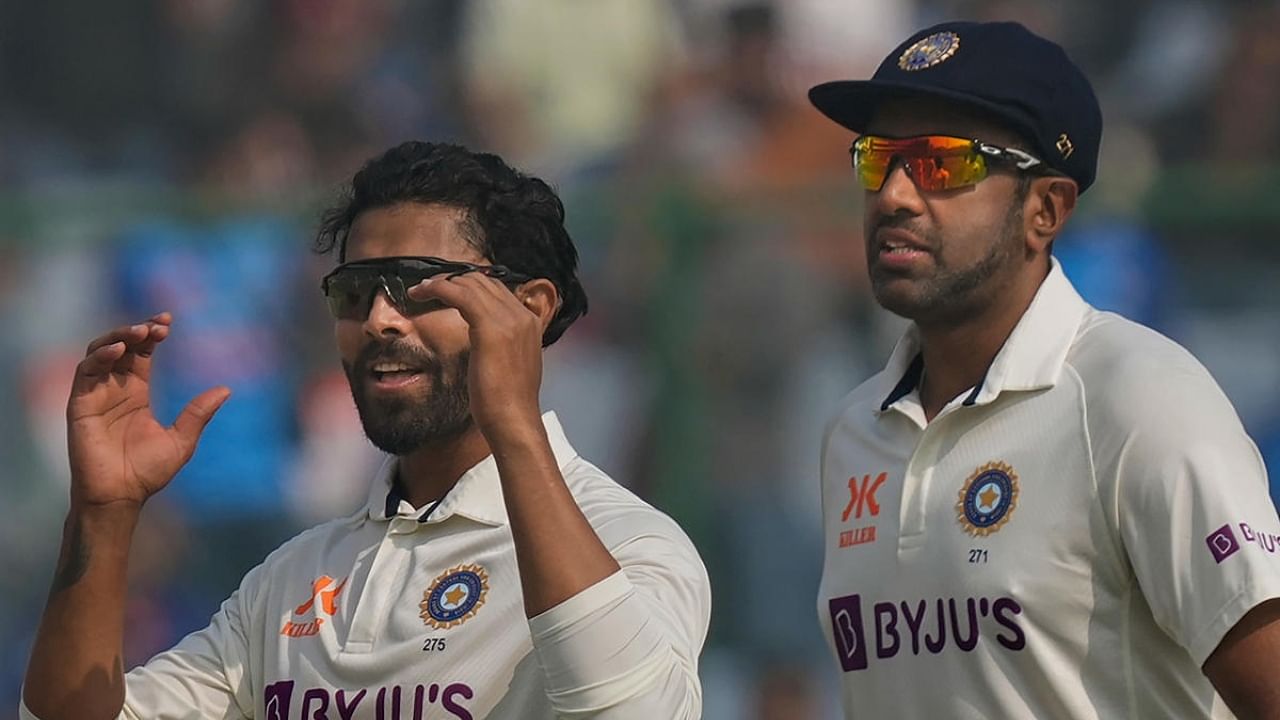
In one of the rarest occurrences, both R Ashwin and Ravindra Jadeja were adjudged the players of the Border-Gavaskar Trophy series following the drawn final Test here at the Narendra Modi Cricket Stadium on Monday. The duo's combined role in India's 2-1 triumph couldn't have been emphasised enough.
Ashwin and Jadeja first played together when the latter made his Test debut against England in December 2012 in Nagpur. It was the last match of the series with England enjoying a 2-1 lead. The match ended in a draw on a sluggish surface and England ended a 28-year wait for a Test series win in India. Ashwin and Jadeja had shared six wickets between them equally for the match while conceding a combined 282 runs in 132 overs. Alastair Cook was the player of the series and James Anderson the player of the match.
By quirk of fate, Ashwin and Jadeja's latest Test together was also on a similarly slow surface where only two innings were completed. The two claimed eight wickets between them with Ashwin accounting for seven of them. The match ended in a draw again but India won the series. Ashwin and Jadeja were players of the series and Virat Kohli the player of the match.
From Nagpur to Ahmedabad, the two matches are also symbolic of their stature as India's trump cards on home pitches. The two came together under Dhoni, grew in strength during Virat Kohli's era and continue to be as impactful with Rohit Sharma at the helm now. The off-spin and left-arm spin combination is having the same influence that the irrepressible pair of Anil Kumble and Harbhajan Singh had in India maintaining their stranglehold at home.
They are a captain's delight.
"I don’t know honestly if they’ll be around," said Rohit when asked if India would hope for them to be around when the Aussies come to India next four years down the line in 2027. For the record, Ashwin is 36 and Jadeja 34.
"I don’t know if I will be around," continued Rohit (laughing). "Four years is a long time. Honestly, for the sake of Indian cricket, I hope they stay and play a lot of cricket. Both of them have been marathon players for us. They know how to get the job done, especially in this part of the world.
"You give them the ball and they get you those breakthroughs. With the bat, they get you crucial runs… Where we stand today in terms of how we perform in Indian conditions, a lot of credit goes to them. A large part of our success belongs to those two guys. It’s not just for a period of a few years, it's over a decade now. It’s a long long time to keep performing the way these two guys have done for us."
It wasn't a stretch by any imagination, for the numbers speak for themselves. Despite playing less number of matches together (47) than Kumble and Harbhajan (54), Ashwin and Jadeja have more wickets combined and, therefore, more Test wins to their credit. That's not to suggest the current pair are better than their predecessors.
While Ashwin and Jadeja look superior quantitatively, the jury is still out in terms of their quality. Kumble and Harbhajan, just like the batsmen of their era, bowled on much better pitches to bat compared to the rank turners we have been seeing in the last six-seven years. With team totals coming down, both the bowling averages and strike rates have come down (see the table).
That said, the two have been wonderful servants of Indian cricket, especially in Tests, complementing each other and feeding off on each other's success.
“It has been a great journey. We (himself and Jadeja) started a long time ago but we wouldn’t be the same or lethal enough without the other. We need to recognise that, at least I have started recognising that over the last 2-3 years,” said Ashwin after the match on Monday.
"He gives me a lot of freedom to be creative with the ball, credit to him," added Ashwin, and the Ahmedabad match was a classic example of it.
On a slow pitch with little turn on offer, Ashwin had to do something special. He had to try different varieties, vary the pace and lengths, change his loading position et al. The veteran spinner returned a rich haul of 6/91 on a pitch Jadeja could get just two across two innings. But without Jadeja's frugal economy rate, Ashwin wouldn't have got the license to be himself.
Apart from being spinners, there's little common between the two. Ashwin is a student of the game with great attention to detail. His cricket is quite structured with knowledge drawn from watching, reading and discussing, and trying at practice. When he speaks of bowling, he enhances it to the level of science, throwing in words like trajectory, loading, wrist-cock, pivot, revs and so on.
Jadeja is quite the opposite. He is a naturally gifted player who doesn't like complicating his game. You will never see him talking about working on different balls or trying different techniques. Listening to him is as seamless as his game.
"Jaddu keeps it really simple, he does not fret around or bother about what has happened," said Ashwin.
Also, Jadeja keeps it simple because he is supremely aware of his limitations and that understanding is his biggest strength. He was man of the match in the first two Tests which had undercooked wickets. With the Ahmedabad pitch turning out to be a flat one, he didn't try anything fancy to get into wickets' columns. His job was to dry up the runs and he did that with aplomb.
The two are different characters, but there's no one way to succeed. It's Jadeja's uncomplicated approach that complements Ashwin's best-laid plans.